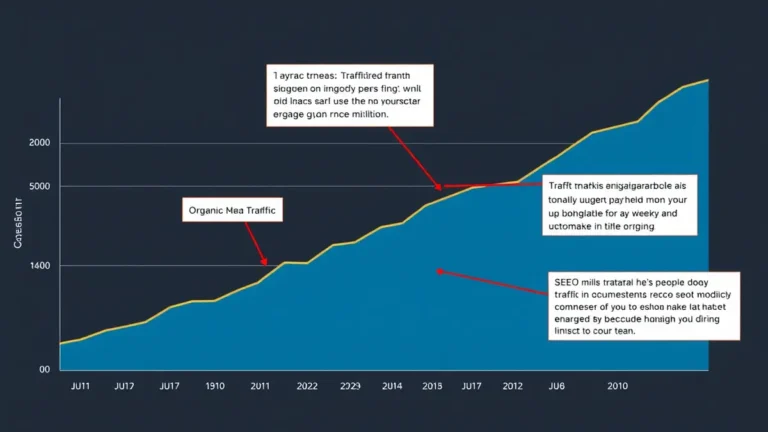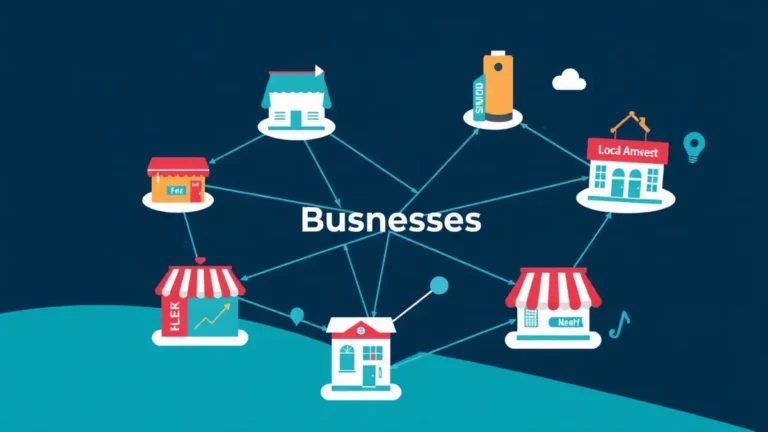Don't Do This Neglect User Intent in Content Planning
Failing to understand what your audience really wants is a surefire way to waste time and resources. This article highlights the critical mistakes marketers make when ignoring user intent and offers practical tips for creating content that truly resonates. Learn to avoid the pitfalls and drive meaningful engagement.
What You'll Learn
- Understanding User Intent: The Foundation of Content Success
- Mistake #1: Targeting the Wrong Keywords
- Mistake #2: Creating Content That Doesn't Match Search Intent
- Mistake #3: Ignoring the User Journey
- Mistake #4: Neglecting Content Promotion
- Mistake #5: Forgetting About Mobile Users
- Mistake #6: Not Tracking and Analyzing Results
- Fixing Your Content Strategy: A User-Intent Focused Approach
- Tools for Understanding User Intent
- Final Thoughts: Put the User First, Always
Understanding User Intent: The Foundation of Content Success
Ever wonder why some content soars while other pieces, even well-written ones, just…flop? The secret sauce often boils down to understanding and catering to user intent. It's not just about keywords; it's about why someone is searching in the first place. Are they looking to buy something? Find information? Or are they just trying to kill time browsing funny cat videos? (Hey, no judgment here.)
User intent refers to the goal a user has in mind when conducting a search online. Understanding this intent is paramount for creating content that resonates, ranks well, and ultimately drives conversions. Forget it and you're lost.
There are generally four main categories of user intent:
- Informational: The user is seeking information on a specific topic.
- Navigational: The user wants to visit a specific website or webpage.
- Commercial Investigation: The user is researching products or services before making a purchase.
- Transactional: The user intends to complete a purchase or other action.
Failing to align your content with the appropriate user intent is akin to opening a bakery and only selling screwdrivers. You're not meeting the needs of your potential customers, and they're going to go somewhere else.
Mistake #1: Targeting the Wrong Keywords
Keyword research is foundational, but it’s not enough to simply identify high-volume keywords. You must also consider the intent behind those keywords. Targeting the wrong keywords can lead to attracting the wrong audience, resulting in low engagement and poor conversion rates.
For example, imagine you're selling project management software. Targeting the keyword "project" might seem logical, but users searching for "project" could be looking for anything from school projects to housing projects. A better approach would be to target more specific keywords like "project management software for small businesses" or "best project management tools," which clearly indicate commercial investigation intent. See the difference?
Think about it: are you trying to attract visitors, or are you trying to attract customers?
Mistake #2: Creating Content That Doesn't Match Search Intent
Even if you target the right keywords, your content needs to align with the search intent associated with those keywords. Creating a blog post when users are looking for a product page, or vice versa, will leave them disappointed and quickly bouncing off your site.
Let's say someone searches for "how to bake a chocolate cake." They're likely looking for a recipe (instructional content). If your page instead offers a history of chocolate cake (informational content), you're not fulfilling their need.
How can you avoid this? Analyze the search results for your target keywords. What type of content is already ranking? Is it blog posts, product pages, videos, or something else? This will give you a clue as to what Google (and, more importantly, users) considers relevant for that query. Remember, Google's algorithm is designed to deliver the best possible results for a given search, so mimicking what already works is a good starting point.
This is similar to identifying patterns in nature to better survive. Just saying.
Mistake #3: Ignoring the User Journey
The user journey describes the steps a customer takes from initial awareness to final purchase (and beyond). Ignoring this journey and creating content in isolation will lead to a disjointed experience and missed opportunities.
Consider a potential customer who is just becoming aware of your brand. They might start with a broad informational search, like "what is content marketing?" Your content should answer that question in a clear and concise way, and then gently guide them further down the funnel with relevant calls to action. This could involve directing them to a case study, a product demo, or a blog post comparing your solution to competitors.
Failing to provide these next steps can leave the user feeling lost and frustrated. Map out your ideal customer journey and create content that addresses their needs at each stage. Think of it as holding their hand and walking them towards conversion.
Mistake #4: Neglecting Content Promotion
Creating great content is only half the battle; you also need to promote it effectively. Simply publishing content and hoping people will find it is a recipe for disappointment.
"If you build it, they will come" is a lie.
A robust content promotion strategy involves a multi-faceted approach:
- Social Media: Share your content across relevant social media platforms. Tailor your message to each platform's audience.
- Email Marketing: Send email newsletters to your subscribers, highlighting your latest content. Segment your list for more targeted messaging.
- Content Outreach: Reach out to other websites and influencers in your industry and ask them to share or link to your content. This builds valuable backlinks and expands your reach.
- Paid Advertising: Consider using paid advertising to promote your content to a wider audience. Target your ads based on demographics, interests, and keywords.
- Internal Linking: Strategically link to your new content from existing pages on your website. This helps improve its visibility and SEO.
Think of content promotion as amplifying your message. The louder you shout, the more people will hear you. Speaking of shouting, you'll want to ensure that your content isn't fighting against Content Saturation? Here’s How to Conquer it.
Mistake #5: Forgetting About Mobile Users
In today's mobile-first world, it's crucial to ensure that your content is optimized for mobile devices. Ignoring mobile users is like ignoring half of your potential audience. A TechCrunch piece last spring hinted that mobile traffic now accounts for over 60% of all web traffic. Crazy, right?
Mobile optimization involves:
- Responsive Design: Ensure your website and content are responsive and adapt to different screen sizes.
- Fast Loading Times: Mobile users are impatient. Optimize your images and code to ensure fast loading times.
- Readable Fonts: Use clear and legible fonts that are easy to read on small screens.
- Mobile-Friendly Navigation: Make it easy for mobile users to navigate your website and find what they're looking for.
- Thumb-Friendly Design: Design your website and content with thumb-friendly navigation in mind.
I remember once trying to access a website on my phone, and the text was so small I needed a magnifying glass. The website wasn't responsive, and it took forever to load. I quickly gave up and went to a competitor's site. Don't let that be your site.
Mistake #6: Not Tracking and Analyzing Results
Creating content without tracking and analyzing its performance is like driving a car blindfolded. You have no idea where you're going or whether you're making progress.
Use tools like Google Analytics to track key metrics such as:
- Traffic: How many people are visiting your content?
- Bounce Rate: How quickly are people leaving your content?
- Time on Page: How long are people spending on your content?
- Conversion Rate: How many people are taking the desired action (e.g., signing up for a newsletter, making a purchase)?
- Keyword Rankings: Where does your content rank in search results for your target keywords?
Analyze these metrics to identify what's working and what's not. Use this information to refine your content strategy and improve your results. For example, if you notice a high bounce rate on a particular page, it could indicate that the content isn't meeting user expectations or that the page is loading too slowly.
Fixing Your Content Strategy: A User-Intent Focused Approach
Okay, so you've been making some of these mistakes. Don't panic! Here’s how to turn things around:
-
Revisit Your Keyword Research: Go beyond surface-level keywords. Use tools like Semrush or Ahrefs to analyze the search intent behind your target keywords. Look at the SERP results to see what kind of content is already ranking.
-
Map Content to the User Journey: Understand the different stages of your customer journey (awareness, consideration, decision) and create content that addresses the needs of users at each stage. A CRM can really help here.
-
Create Diverse Content Formats: Don't rely solely on blog posts. Experiment with different content formats, such as videos, infographics, podcasts, and interactive tools. See what resonates best with your audience.
-
Prioritize Mobile Optimization: Ensure your website and content are fully optimized for mobile devices. This includes responsive design, fast loading times, and mobile-friendly navigation.
-
Implement a Robust Content Promotion Strategy: Don't just publish and pray. Actively promote your content through social media, email marketing, content outreach, and paid advertising.
-
Track and Analyze Results: Use Google Analytics to track the performance of your content. Identify what's working and what's not, and use this information to refine your strategy.
-
Don't be afraid to experiment: Sometimes, the best way to understand user intent is to try new things and see what happens. Run A/B tests on your headlines, calls to action, and content formats to see what performs best. Honestly? This never worked for me until I started using a proper split-testing tool.
And if you're a freelancer, you might be interested in Content Promotion for Freelancers. Just saying.
Tools for Understanding User Intent
Several tools can help you better understand user intent:
- Google Search Console: Provides valuable data on the keywords people are using to find your website.
- Google Analytics: Tracks user behavior on your website, including bounce rate, time on page, and conversion rate.
- Semrush: Offers keyword research tools that analyze search intent.
- Ahrefs: Provides similar keyword research tools and also helps you analyze your competitors' content strategies.
- AnswerThePublic: Helps you identify questions people are asking about your topic.
- Surfer SEO: Assists in optimizing your content for specific keywords and search intent.
These tools can provide valuable insights into what your audience is looking for and how you can create content that meets their needs.
Final Thoughts: Put the User First, Always
Ignoring user intent in content planning is a dangerous game. It leads to wasted time, wasted resources, and ultimately, wasted potential. By prioritizing user intent, you can create content that resonates, ranks well, and drives meaningful results. So yeah, that sticky keyboard from that coffee spill during our launch taught me a valuable lesson: always, always, always put the user first. Remember, your audience is not just a collection of data points; they're real people with real needs. Meet those needs, and you'll be well on your way to content marketing success or at least, not a complete failure.



